After dispatching the Nashville Predators in four straight games, the Colorado Avalanche are set to battle the St. Louis Blues in the second round of the playoffs, a rematch of last season’s first-round encounter. The two Western Conference clubs were among the highest-scoring outfits in the league this season, meaning each team’s respective defensive games will be brought into increased focus.
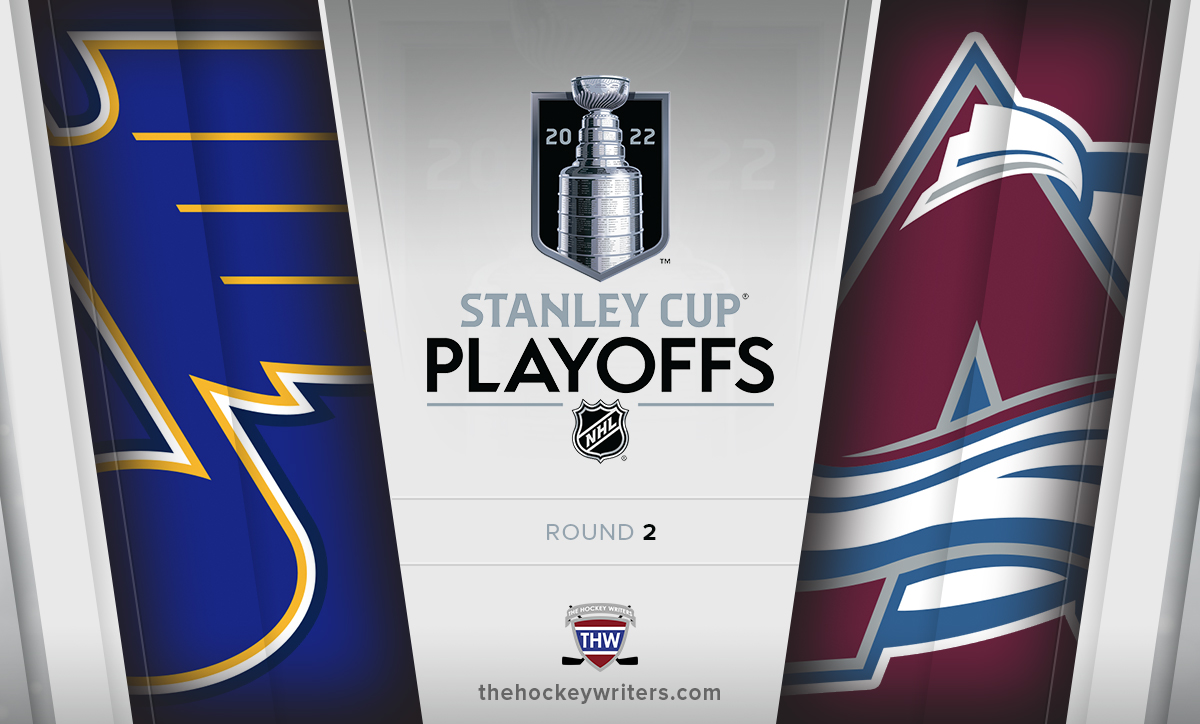
The Blues won their first – and only – Stanley Cup in 2018-19, but can only claim one series victory in the three years since. In Colorado, the Avalanche look to break their longstanding curse, having been stymied at the second-round hurdle in three consecutive postseasons. Now, let’s dig into the key matchups that should determine the outcome of this series.
Avalanche’s Star Power Goes Up Against Blues’ Depth
In comparing the roster composition of both teams, it’s evident that the Avalanche can trot out a number of the NHL’s true elite at both forward and defence. Although it’s by no means a requirement to boast a perennial Hart Trophy candidate in your lineup, a quick scan of the list of Conn Smythe Trophy winners suggests some superstar talent is a near-undebatable prerequisite for a Stanley Cup triumph. Yet, as the Blues demonstrated in their own recent Cup conquest, rolling four solid lines and three consistent pairs is a proven recipe for success.
Forwards: Superstar-Led Offense or Scoring By Committee?
Simply put, very few NHL franchises can challenge the level of star power within the Avalanche lineup. They boast eight skaters producing at least 0.75 points per game (P/G), the highest total in the league this season (minimum 41 games played). Limited to just forwards, the Avalanche still reign supreme with four forwards scoring at a point-per-game pace.
Perennial MVP candidate Nathan MacKinnon leads the charge and looks to add to his career tally of 75 points (33 goals, 42 assists) in 54 playoff games. The corresponding P/G rate of 1.39 is the highest in the league since his first postseason appearance in 2014. No other player elevates his game in crunch time as he does, and having Mikko Rantanen (fourth) and Gabriel Landeskog (22nd) riding shotgun gives the Avalanche a formidable attacking triumvirate. A flurry of injuries meant that the trio didn’t play together as frequently this season, but they were dominant when they did (eighth in 5v5 goal share).
| Avalanche | Blues | ||
|---|---|---|---|
| xGF/60 | 13 | 25 | xGA/60 |
| GF/60 | 4 | 18 | GA/60 |
| SF/60 | 4 | 23 | SA/60 |
| xGA/60 | 7 | 15 | xGF/60 |
| GA/60 | 10 | 5 | GF/60 |
| SA/60 | 21 | 25 | SF/60 |
Rantanen paced the Avalanche in goals (36) this season but has yet to find the twine in these playoffs. He’s able to wriggle his way into dangerous areas (first on the team in shots off of high-danger passes), so the results should eventually swing in his favour. Landeskog missed almost the entirety of the second half of the season while recovering from injury, but scored at a 48-goal pace when healthy, the highest of his career. MacKinnon remains the ultimate dual-threat, atop the leaderboards in both shots and shot assists per-60.
Colorado’s main stars are complemented by Nazem Kadri (87 points in 71 games), Andre Burakovsky (61 in 80), and Valeri Nichushkin (52 in 62) in supporting roles. Kadri in particular has erupted this season, hitting career-highs in every statistical department. His ability to combine tenacity with finesse is an in-demand skill this time of year, but he must rein in his notorious temper for the Avalanche to reap the benefits of said intensity. He was suspended for a reckless hit on Justin Faulk last postseason, hamstringing Colorado in their heavyweight bout against the Vegas Golden Knights.
While the top of the lineup does the scoring, the bottom takes care of key defensive matchups and effectively sustains the Avalanche’s rush-heavy offence. Darren Helm and Nico Sturm are forechecking demons, and Andrew Cogliano and Nicolas Aube-Kubel are no slouches in that department either. Further, one of general manager Joe Sakic’s most underrated moves was the acquisition of Artturi Lehkonen from the Montreal Canadiens at the trade deadline. He offers the Avalanche another two-way force in the mould of Valeri Nichushkin and is a threat off of the rush.

Remember how I said that few teams can go toe-to-toe with the Avalanche? Unfortunately for head coach Jared Bednar, the Blues are one of those groups. Not only can they count nine 20-goal scorers on their roster (first in the NHL), but they are the best team at completing high-danger passes (cross-seam and from behind the net). They are patient with the puck and have the talented marksmen to capitalize on high-risk, high-reward plays.
Central to this strategy is the duo of Vladimir Tarasenko and Robert Thomas. The Russian winger, nearly exiled to Seattle in the expansion draft, generated the second-most scoring chances per-60 this season behind only Auston Matthews. Setting him up was the Blues’ budding superstar in Thomas, completing the third-highest rate of passes leading to a scoring chance. Along with offseason addition Pavel Buchnevich – a two-way threat in his own right – the trio outscored opponents 33-19 and accrued a 56.4% share of xGF at 5v5. That line makes the Blues hum, and the Avalanche will have their hands full as a result.
Related: Scouting the Blues in Round 2 vs. the Avalanche
Winger Jordan Kyrou broke out this season, scoring over a point-per-game while dictating the Blues’ attack with his zone-entry magic and chance creation off of neutral zone transition. He, along with the equally as adept Thomas, will go head-to-head with one of the most mobile defence cores in the league to establish possession in key areas. Jack Johnson and Ryan Murray struggle with zone entry defence, so an injury to one of the Avalanche’s top defenders could introduce potential liabilities into the fray.
Even with their newfound emphasis on speed going forward, the Blues remain a team committed to generating chances off of the forecheck to diversify their approach. The aforementioned names are able to evade defenders with their agility and can count on relentless pressure from their bottom-six to contain play within the offensive zone.
Rounding out the offensive contributors are Ivan Barbashev (60 points), Ryan O’Reilly (58), Brayden Schenn (58), David Perron (57), and Brandon Saad (49). All are multifaceted talents, giving the Blues an embarrassment of riches within their top-nine forward group. Two-way play is often the key to postseason success, and the Blues can count on a number of veterans who have scaled the Stanley Cup mountain. I rarely harp on the importance of intangibles, but St. Louis has them in spades.
Both teams employ a rush-centred offensive system, so the club that better defends their blue line will effectively kneecap the other’s primary strategy. Yet, both teams are also above-average at creating chances off of the cycle, so their versatile attacks will be difficult to completely neutralize. The outcome of this series will depend on which group can more authoritatively assert their game plan over the other. Who will adapt quicker?
Defensemen: Can the Blues Stop the Makar Machine?
Any discussions around the Avalanche’s blue line begin and end with Cale Makar. The 2021-22 Norris Trophy frontrunner torched the Nashville Predators in Round 1, scoring 10 points in a sweep to post the highest playoff scoring rate among defensemen in NHL history through four games. He’s a zone-entry wizard with the ability to carve open defensive schemes with his skating and boasts the finishing acumen (28 goals this season) to make opponents pay for their mistakes. His 86 points represent the second-highest total of the salary cap era, and he is keen for that production to translate to the postseason.
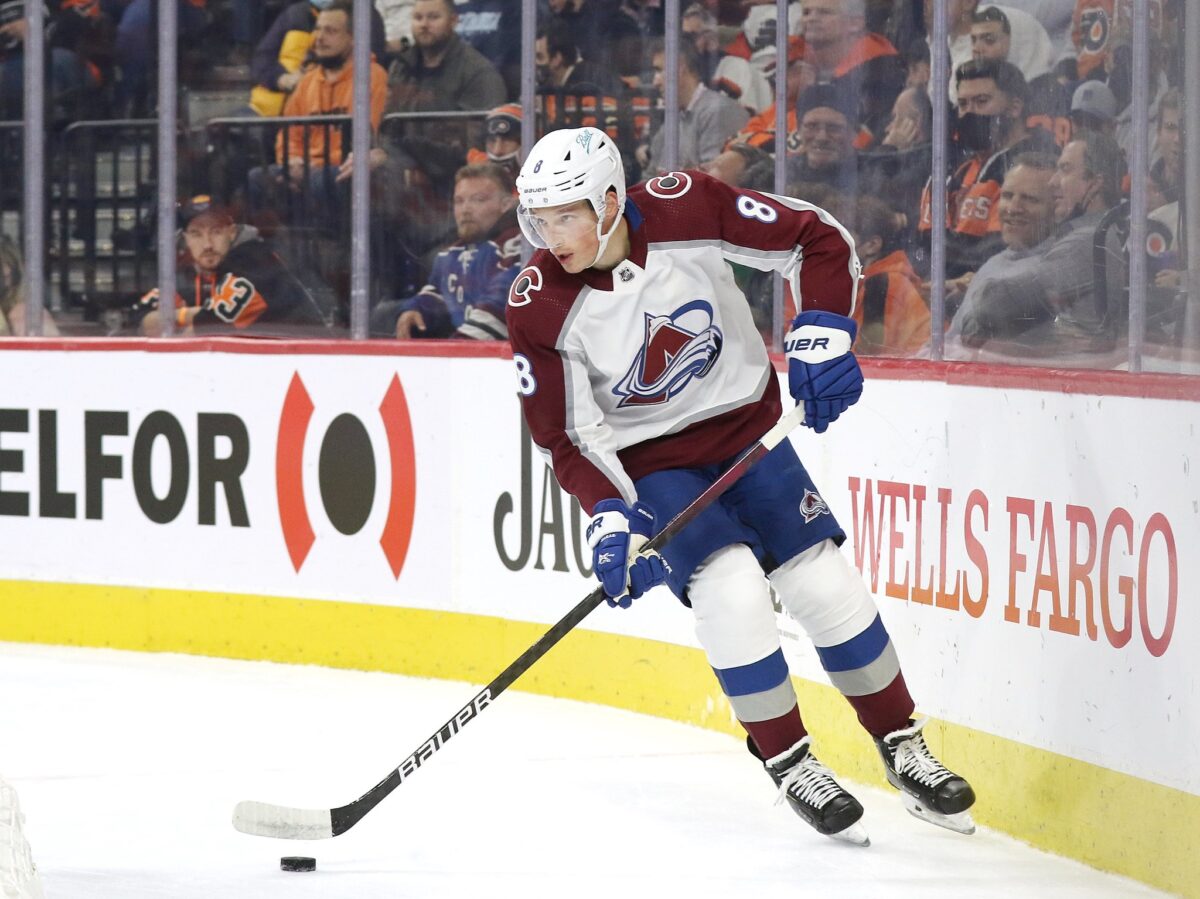
Every Batman needs his own Robin and Devon Toews is the perfect sidekick. He functions as the defensive conscience of the top pair, but he’s no slouch offensively either. With 57 points (13 goals) in 66 games this season, he set career-highs in every offensive category, adding another element to one of the NHL’s most comprehensive blue line packages.
Despite not being blessed with the same physical gifts as Makar, he is also a very strong transition player, capable of cleanly transporting the puck across all three zones with ease. Together, the pair controlled 57.4% of shots (seventh among pairs with at least 300 minutes played), 57.7% of expected goals (xGF%), and a resounding 70% of goals (third) at 5v5. The two complement each other perfectly, and the Blues will need to figure out how to cut off the Avalanche’s supply of offence from that source.
Related: Avalanche’s Makar Early Conn Smythe Trophy Favourite
In the first round against the Predators, the Avalanche rolled three consistent defensive pairs to great effect. Each of Toews and Makar, Samuel Girard and Josh Manson (51.2% xGF), and Bowen Byram and Erik Johnson (68.7%) out-chanced their matchups, showing few weak spots for the Blues to target. Concerns persist about Girard’s viability in a physical playoff series, but Manson was acquired to add some brawn to the second pairing.
Still, the Avalanche’s cadre of defensemen is among the best at retrieving the puck and transitioning out of the defensive zone with possession. Each of Makar (77.9% of successful exits), Toews (66.3%), Girard (67.2%), and Byram (67.5%) are elite in that regard, forming one of the most forecheck-resistant blue lines in the NHL. Cut off one head and another emerges in its place.
Byram in particular is an X-factor in what should be a deep Avalanche playoff run. The fourth-overall selection from the 2019 Draft has battled concussion issues since making his NHL debut, but he appears to be in full health ahead of Round 2. The 20-year-old showed flashes of his tantalizing potential this season (17 points in 30 games) while occasionally assuming top-pair duties alongside Makar. Having a player of his calibre on the bottom pair, with the veteran Johnson there to provide guidance, should allow the team to exploit weaker matchups down the Blues’ lineup.
While the Blues are one of the few teams who can rival Colorado’s depth up front, their defence core leaves a lot to be desired. The offensive-minded Torey Krug is slated to miss the start of the series with a lower-body injury, leaving the Blues’ backend in flux ahead of Game 1.
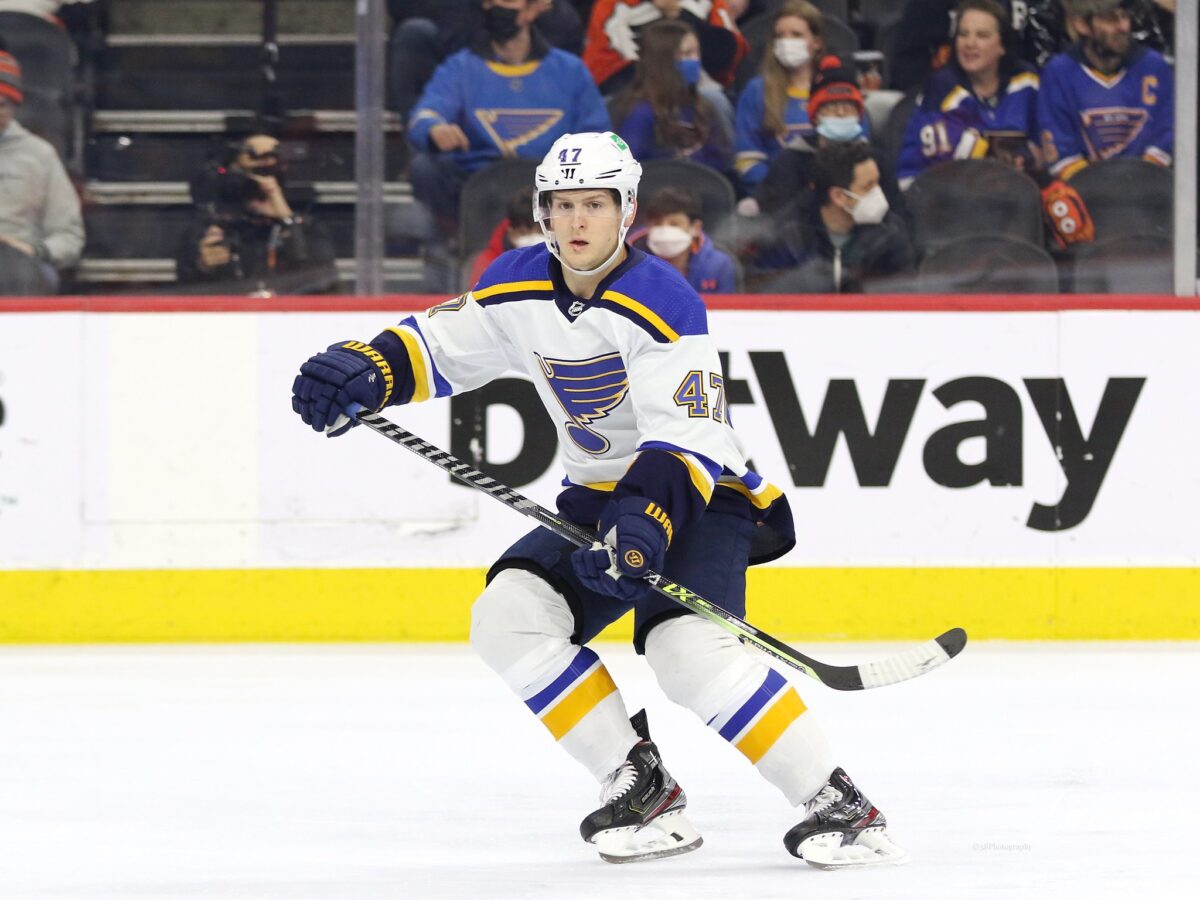
Without Krug manning the top unit, rookie Scott Perunovich has assumed the primary duties on the man advantage as the Blues have rolled out an 11-forward, seven-defender lineup thus far. He’s produced three assists in three playoff games, and his ability to orchestrate the offence was integral in weathering Krug’s absence in the first round. Compared to the Avalanche, St. Louis’ defensemen rarely join the attack. Krug and Justin Faulk are the only Blues’ rearguards to grade out as above-average in both shots and shot assists (the last pass before a shot is taken) per-60 at 5v5.
Colton Parayko will be saddled with the unenviable task of neutralizing Colorado’s top forwards in this series. He and Niko Mikkola were the Blues’ strongest defensive pairing by expected goals against per-60 in the regular season, but the shutdown label will be applied to the pair led by Parayko. Despite his physical nature, he finished the regular season as the only Blues defender with a positive penalty differential, leading the group at a plus-8 margin. The Avalanche’s speed could wreak havoc on an undisciplined Blues blue line, with Mikkola (fourth), Krug (31st), and Perunovich (38th) among the most frequently penalized defenders per-60-minutes.
No matter the configuration, the Blues are staring down a precarious situation. None of their most common pairs at 5v5 (minimum 200 minutes) posted a shot or xGF share greater than 50%. They’ve received the level of goaltending needed to make up for the discrepancy in chance quality, but relying solely on that isn’t a reliable recipe for success. Colorado’s transition game will rip them to shreds if they can’t leverage their physicality to box out the Avalanche attack.
Goalie Battle Depends on Kuemper’s Health
Given the brief nature of a best-of-seven playoff series, a goaltender’s performance can be the difference between going home early and making a deep postseason run. Both the Avalanche and Blues have goalies with track records of success, although the current state of their respective creases is uncertain. The Avalanche’s Darcy Kuemper missed out on Colorado’s series-clinching win against the Predators due to a scary incident involving Ryan Johansen’s errant stick. If he fails to return to the net, the series becomes more challenging to predict.
Despite a rocky start to his Avalanche tenure, Kuemper was one of the league’s best goaltenders this season, especially in the back half. Among goalies to have played in at least 10 games, he ranked fifth in save percentage (.921 SV%) and sixth in goals saved above expected (GSAx). He encountered a heavy workload (eighth in total shots faced) while backstopping the Western Conference powerhouse, but held firm to help secure the NHL’s second-best record this season. The 32-year-old doesn’t own a substantial breadth of playoff experience (21 games), but he’s performed well in those limited appearances, posting a .915 SV% over his postseason career.
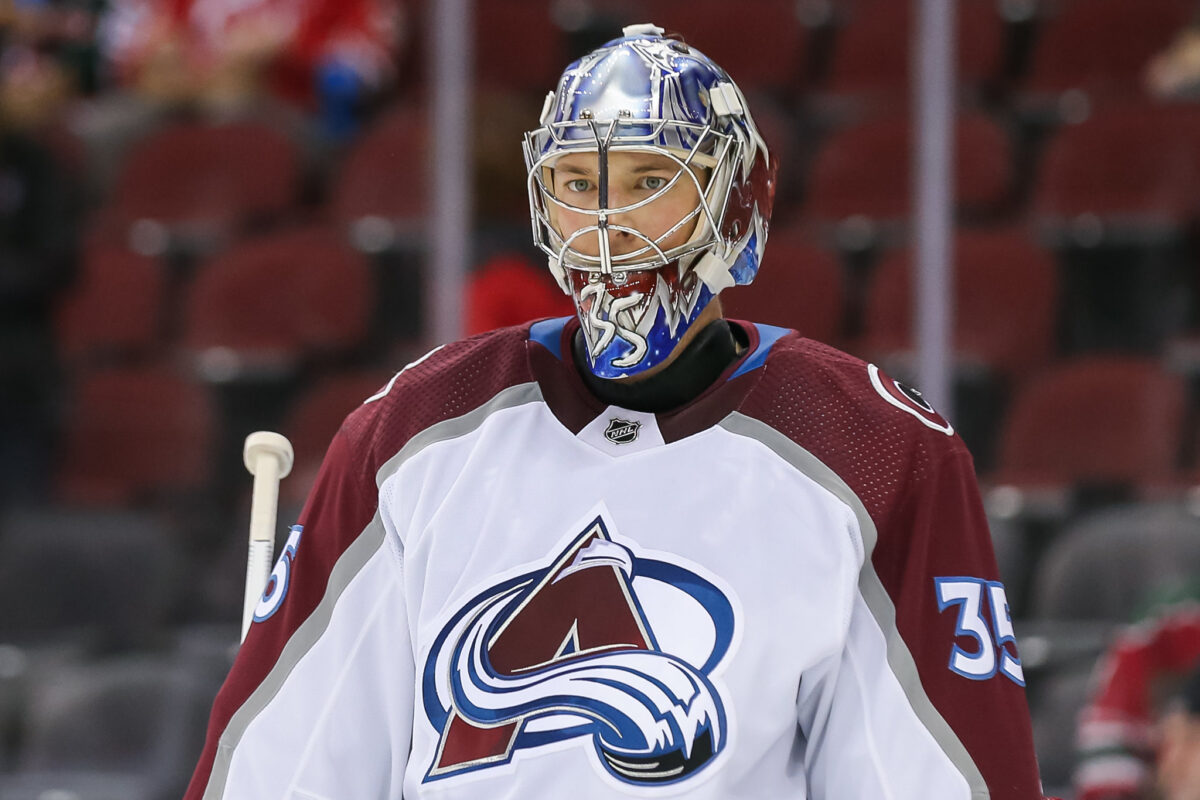
Kuemper’s backup, Pavel Francouz, has observed regular-season success in owning a .921 SV% over his three-year NHL career, but his playoff numbers have dipped dramatically in comparison. Twice thrust into starter duties because of injuries, he’s submitted an .894 SV%, and saved 0.07 GSAx over eight career appearances. His poor results have come in an extremely small sample size so there’s time for a rebound, but there’s no argument he’s a downgrade from Kuemper. The Avalanche and a goaltending crisis in the playoffs – stop me if you’ve heard that one before.
Just as the Avalanche have navigated some turbulence in the crease this season, the Blues have struggled with goaltending concerns of their own. In the three seasons since his improbable ascent into franchise cult hero in 2018-19, Stanley Cup winner Jordan Binnington has floundered against the backdrop of a hefty contract extension which kicked in this year.
Related: 3 Keys to Blues Overcoming Avalanche in Round 2
Binnington’s .908 SV% in 129 regular-season games since 2019 ranks 37th among qualified goaltenders (minimum 41 games played in that time), including a .901 mark in 2021-22. His playoff numbers have been even worse, posting a porous .875 SV% in nine postseason appearances before this season. That reversal of form drove the Blues to turn to backup Ville Husso on a more frequent basis, with his .919 SV% in 40 games likely saving their season. Still, some hiccups from Husso gave the net back to Binnington, and his first-round performance against the Minnesota Wild bodes well for his and the team’s confidence against the Avalanche.
Binnington stopped 83 of 88 shots faced (.943) against Minnesota, including turning away 25 of 26 in the series-clinching Game 6 win. Even with his welcome return to form, questions abound. Which version is the real deal, the one who unexpectedly spearheaded the franchise’s first Stanley Cup triumph, or the one who has struggled in the three years since? Goaltending is voodoo, and the answer will go a long way in determining which organization advances to the Western Conference Final.
Penalty Kill Struggles Could Be Avalanche’s Downfall
Although the Avalanche’s penalty-killing improved as the season progressed (seventh in the NHL since Jan. 1 at 81.8%), their full-season mark of 79.7% (15th) points to an exploitable vulnerability. They struggled to stop opponents from getting high-quality chances (20th in shorthanded expected goals against per-60-minutes) and were an average outfit in suppressing shot attempts (16th in shots against per-60). It was their one discernible weakness in the first round, as the Predators fired at a 23.1% clip (seventh in the playoffs) in an otherwise uncompetitive sweep.
| Advanced Stat | Avalanche | Blues | Advanced Stat |
|---|---|---|---|
| PP xGF/60 | 7 | 8 | PK xGA/60 |
| PP GF/60 | 8 | 4 | PK GA/60 |
| PP SF/60 | 9 | 5 | PK SA/60 |
| PK xGA/60 | 20 | 14 | PP xGF/60 |
| PK GA/60 | 16 | 2 | PP GF/60 |
| PK SA/60 | 16 | 10 | PP SF/60 |
Considering that the Blues boast a dangerously potent power play, this could be the Avalanche’s Achilles’ heel. St. Louis ranked second in the regular season at a blistering 27% and one that torched their first-round opponents in the Wild to the tune of a 30.8% conversion rate (fourth-best of the playoffs). Despite only creating chances at an about average rate (14th in PP xGF/60), the team’s finishing outperformed their expected total (second in GF/60). Special teams can make all the difference in a short series, so the Avalanche must figure out how to contain the Blues’ top unit.
As with their even-strength scoring, the Blues’ power-play offence operates by committee. When looking at the NHL’s top goalscorers with the man-advantage, you have to go all the way to a 28th-ranked Perron (11) before you happen upon a Blues player. He’s also the team’s leading point producer on the power play (26), 41st in the league. It’s a testament to the Blues’ scoring depth considering how efficient the power play has been this season, but the lack of a true game-breaking talent can be worrisome with the razor-thin margins inherent to the playoffs.
On the other side of the coin, if their power play hums at the same level it did against the Predators, few teams can stop the Avalanche. The absence of Vezina Trophy finalist Juuse Saros contributed to Nashville’s inept penalty kill in the first round, but the Avalanche converted on nearly half of their powerplay opportunities, posting a 43.8% hit rate. They ranked top 10 in shot and chance generation as well as their overall efficiency on the season, meaning their early success wasn’t just a byproduct of substandard goaltending on the other side.
The Avalanche boast four players within the top 30 of powerplay production, with Mikko Rantanen pacing the team with 16 goals with the man-advantage. Injury troubles during the regular season kept their other stars off of the leaderboards but they will capitalize if given the opportunity, as MacKinnon (16th) and Landeskog (33rd) rank highly in total powerplay goals scored since the start of the 2019-20 season.
The Blues take a more proactive approach to penalty-killing, ranking fifth in shots per-60 and 10th in expected goals per-60 while shorthanded this season. The Avalanche only ranked 10th and 20th in those marks respectively, demonstrating a greater reliance on their goaltenders to act as the pillars of their penalty killing strategy. It’s a fine tightrope to walk in the best of times, but giving a potent Blues power play too many chances could sink them in this series.
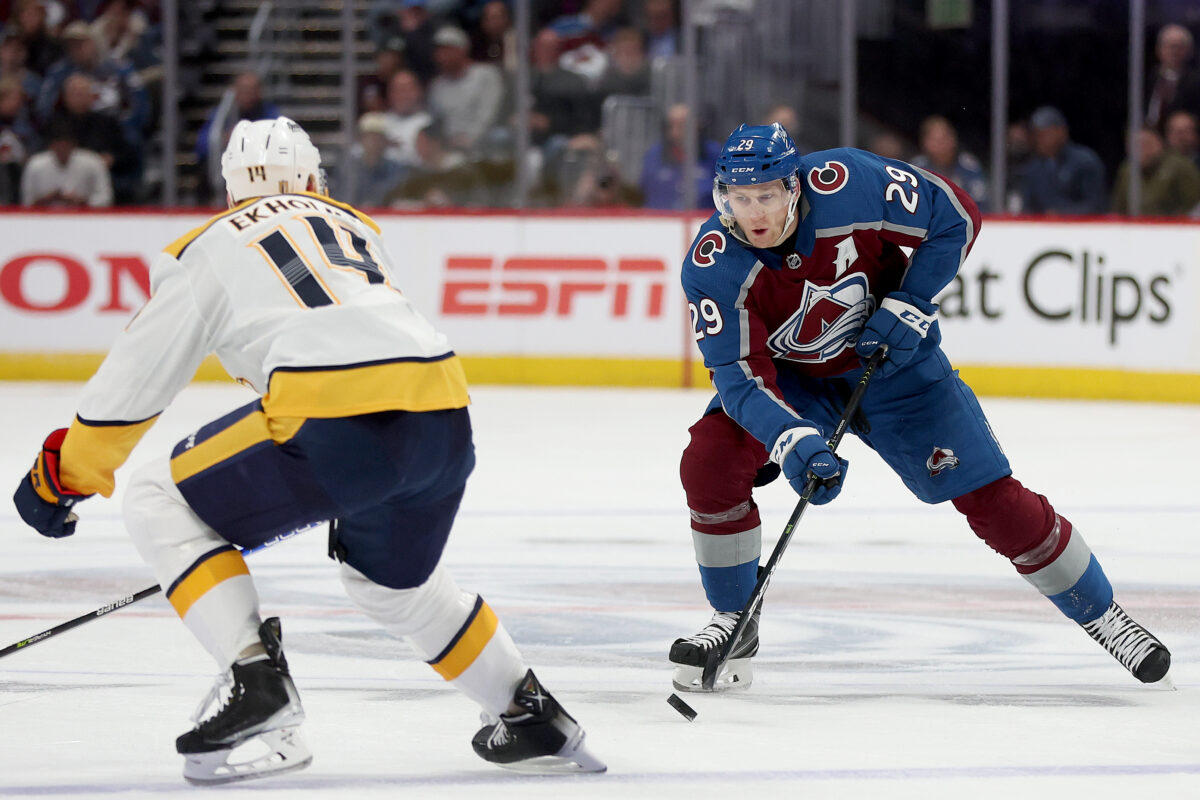
While the Avalanche drew the fourth-most penalties during the regular season, the Blues were among the least penalized teams, committing the fifth-lowest number of infractions. The Avalanche were slightly more chippy in being called for the 11th-most transgressions, but the Blues weren’t particularly successful at getting opponents down a man, only ranking 21st in penalties drawn. Considering each team’s penalty record, this series hinges on which of the two extremes wins out.
Avalanche Ready to Fulfill Stanley Cup Potential
St. Louis should offer up stiffer competition than the Predators, but the Avalanche have more talent in key positions to overcome the Blues’ robust forward depth and stable of sturdy blueliners. The outcome of the series likely hinges on which team’s penalty kill holds strong, and which goaltender can weather their opponent’s offensive barrage. The Avalanche should win this series and advance to their first Western Conference Final since 2002, but the Blues pose a considerable threat to their Stanley Cup aspirations.
Final Verdict: Avalanche win series 4-2
Data courtesy of All Three Zones, Hockey Reference, Evolving Hockey, MoneyPuck, and the NHL.
